What you find on this page:
Living in a temperate climate, you might find that spring brings snowmelt or lots of rain — otherwise known as “mud season.” Or maybe rainy periods throughout the year worsen a muddy yard with poor drainage. In either case, there are several muddy backyard solutions for you to consider.
Read on to learn more about how to fix a muddy yard!
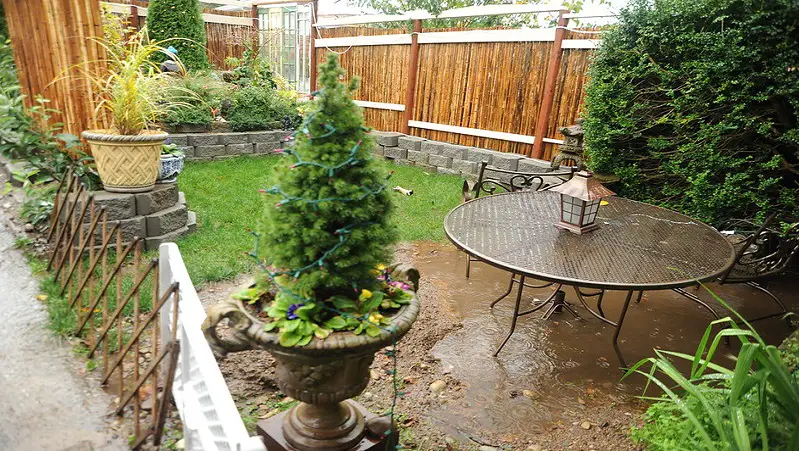
Extend Gutter Downspouts
By extending gutter downspouts, you may often alleviate a problem with a wet lawn or yard that stays wet days after rain.
Gutter downspouts may be extended by burying a new pipe at least 10 inches below ground to carry rainwater further from the house. However, be aware that piping above the frost line in northern climes may freeze during the winter months.
Depending on your budget, you can hire a backhoe with a 12-inch blade or just hand-dig the trenches yourself. Simply connect a downspout adapter into a 3×4-inch reducer coupling, which you then slide into the downspout’s bottom end.
For most situations, you might choose to lay regular PVC pipe to extend the gutter downspout. However, flexible piping is an option if you need to maneuver around a rock and other obstacles in the path. That requires only that you glue a 3×4-inch reducer coupling to the hard pipe in the trench.
Of course, you’ll remember to slope the drain away from the house, so gravity carries the water away from your muddy grass.

Install a French Drain
If you’re looking for other ideas on how to fix a soggy yard, the French drain might be a practical solution, where allowed.
The trench for a French drain should be dug 8 inches to 2 feet deep. You’ll then line the trench with landscaping fabric and a gravel bed before laying the pipe and then topping with gravel and then topsoil. The line will need about 0.72 cubic feet of gravel per foot for a typical 10-inch wide drain.
The French drain may even run level or uphill in spots, so long as the discharge is lower than where the drain connects to the gutter downspout. The French drain’s main advantage is the ability to collect rainwater along with the range of the perforated pipe running beneath the lawn, rather than just at the gutter downspout source.
However, many municipalities forbid connecting a French drain to their sewer systems, making it a better option for exurban and rural homes.

Fix Your Drainage System
Your existing drainage system may be just fine for its intended purpose but just need a little bit of maintenance and repair. After years, pipes might get clogged with dirt and debris or damaged by roots, requiring patching or replacement in some spots. You may also see good improvement of drainage by cleaning the gutters at least once per year.
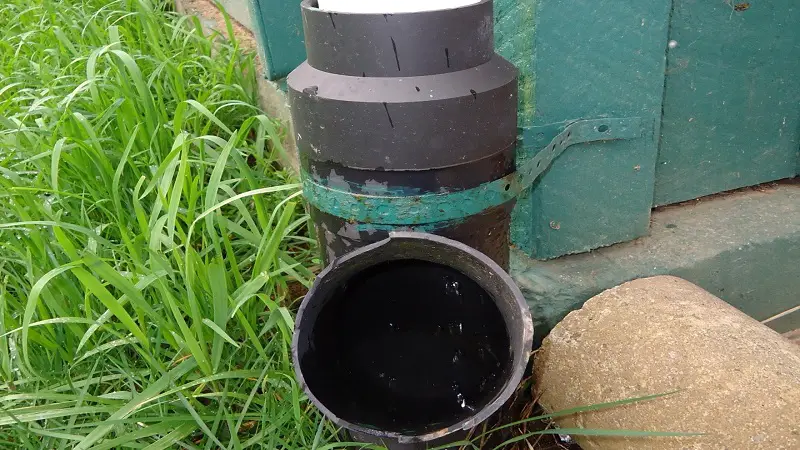
Create a Creek Bed
Building a creek bed in your yard to carry away stormwater may be an option for country homes that can look pretty nice.
You simply dig a meandering trench and cover it with landscaping fabric. Then, you’ll fill the creek bed with rocks and some small boulders for an aesthetic touch. The dry creek bed is also much cheaper than a comparable French drain.
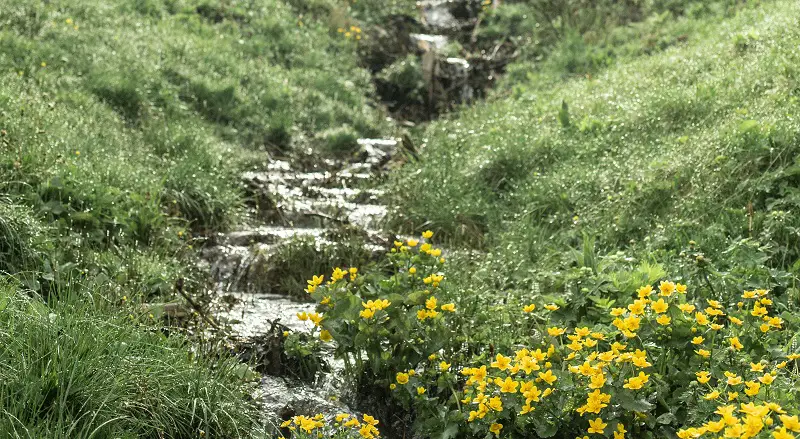
Create a Rain Garden
Some folks might prefer to work with terrain rather than trying to recreate the earth, thinking of choosing the path of least resistance.
If so, you may wish to build a rain garden and simply plant native species of flowering plants. Some popular species include swamp milkweed and swamp mallow, Joe Pye weed, Black-eyed Susan, Bluestar, and Cardinal flower, among many others.
Rain gardens provide a cheap and straightforward way to take care of groundwater runoff in a beautiful and environmentally responsible way. Building a rain garden is an excellent way not only to save money but to score points with conscientious neighbors.
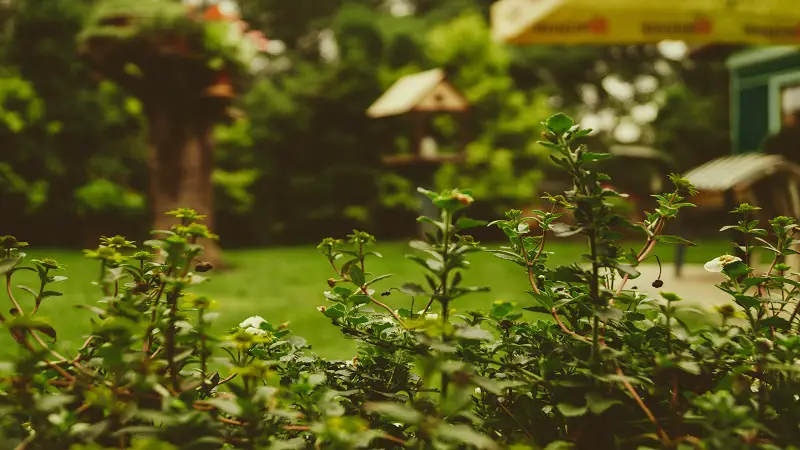
Dig a Dry Well
Digging a dry well may provide as much as 48 gallons of storm surge capacity for your yard as a mid-price solution.
The dry well is simply a hole in the ground filled with stone to allow a drainage pipe to discharge water into the ground, leaching out further below the ground. Typically, you’ll use a plastic perforated barrel filled with stone, buried at least 10 feet from your house’s foundation. You should dig the hole 4 feet deep and just as wide. The trench feeding the dry well from the gutter downspout should be 11 feet deep and six inches wide, sloping gradually toward the dry well.
The recommended slope is ¼ inch per foot of piping.
You should extend the PVC pipe feeding the dry well at least 14-16 inches into the hole, enclosing the plastic barrel first with landscaping fabric. By doing so, you’ll be much less likely to see soggy soil clogging the stones within the barrel.
Once you’ve filled the dry well, you can replace the topsoil and re-lay the sod.
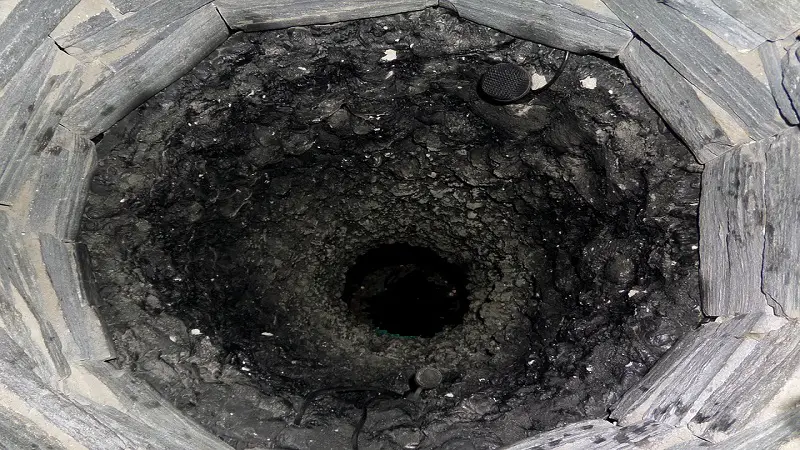
Use Lawn Gravel
How to cover up mud in the backyard? Some yards with clayey soil may drain poorly, regardless of how well the drainage system works. One solution for muddy soil is to sprinkle lawn gravel on the problem spots.
If you notice muddy spots in your yard after a rainstorm, you might consider starting over entirely with your lawn. Simply lay the landscaping fabric over your existing lawn before topping it with lawn gravel. The lawn beneath will simply die a quiet death and pose no problems to your future lawn, decomposing in place. The landscaping fabric will stop weeds from growing through the gravel layer, too.
However, you may first want to compact the ground with a compactor before laying down the fabric for a much neater presentation.

Dethatch Your Yard
Some folks find themselves saying, “My yard is always wet and muddy — woe is me!”
Your home might not be a mansion, and your yard might not look like Pebble Beach. But rather than passively accepting a perennially messy yard, there is basic maintenance you can do yearly to improve conditions. You can dethatch your lawn with a simple dethatching rake, making a pass in late spring for southern lawns. In more northern areas, you’ll want to dethatch your lawn in late summer to early fall when the grass is still growing.
It’s best to dethatch your lawn when the ground is still moderately moist, but the grass is actively growing.
The sharp tines of the dethatching rake rip away the grass and other debris that builds on the soil beneath the grass. However, you can also use a power rake to dethatch the lawn more aggressively and remove unwanted roots and stones. Either way, the process cleans a layer of debris from the lawn, allowing the grasses to collect nutrients needed for growth more effectively.
After dethatching, you’ll seed the lawn for an even better coverage. Some areas of your lawn may be ripped open to the topsoil, which is an excellent chance to sew fresh grass seed to replenish your lawn.
Since dethatching your lawn will likely leave some bare spots or rough patches, it’s best done when the grass is actively growing. You’ll want to hold off on backyard weddings and family reunions until after the grass is replenished.
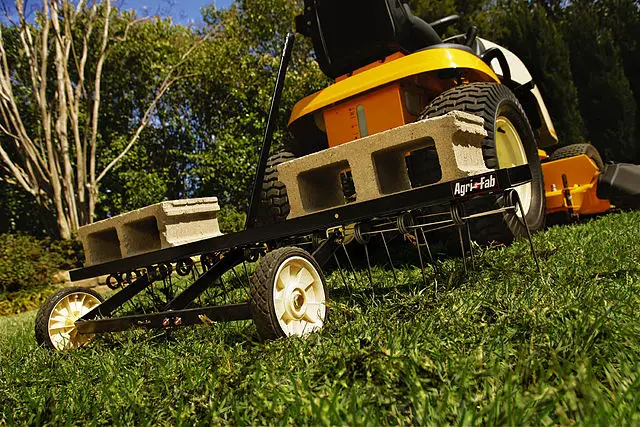
Use Kitty Litter
If you’re still wondering how to dry up a muddy yard, kitty litter may be an inexpensive solution — though labor-intensive.
First, you’ll sprinkle a layer of cat litter over the muddy ground and then give it some time to absorb the pooled water. Once the kitty litter has become saturated, you might then add a second layer and even leave overnight.
After you’re satisfied that the kitty litter has done its job, you’ll scoop out the clumping mess for disposal elsewhere. Let your yard then air-dry for several days before tilling the ground and then laying sod or planting new grass.
For these projects, it makes sense to buy kitty litter in bulk at either a farm supply store or online with free shipping.

The Last Straw: A Simple Fix
How to harden muddy soil? The time-proved old-fashioned way typically involved the cheapest materials. Some hay or straw sprinkled over a lawn and then sewn with grass seed has always been the quickest temporary solution to muddy yards. The only drawback might involve straw blowing away in unusually windy conditions, although that shouldn’t be a normal worry.
Typically, farm equipment stores sell straw for much cheaper than hay, making it a more practical solution for the problem of how to harden muddy soil.
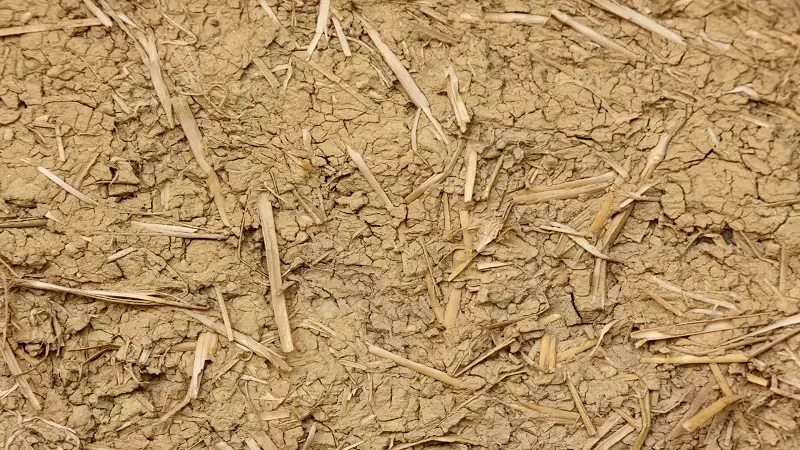
Differing Situations
How to cover up mud in your yard is a question with many answers that depend upon your budget and aesthetic preferences, as well as any municipal restrictions. Some solutions may require annual or frequent applications, requiring regular labor. Other solutions, however, may require substantial initial investment but pay dividends for years and years to come.
Whatever you choose should help to keep your feet dry and your porch cleaner. We hope you now know how to fix a muddy yard without much difficulty at all!
The best way to get rid of the muddy soil is by using materials like hay or straws. This method is cost-efficient and easy to do. There are also several other methods that work just as well. You can find these methods here.
An easy way to get rid of the rainwater is by using cat litter. This method is cost-efficient but does take a while to complete. If you’re looking for a less time-consuming method then this might help you find the right solution.






